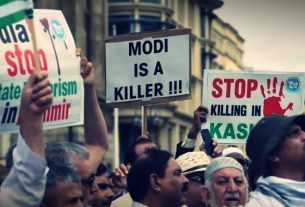Tue 07 April 2020:
A chemical weapons attack was carried out on the people of Douma, south-western Syria, killing around 85 people
Two years ago on this day, a chemical weapons attack was carried out on the people of Douma, south-western Syria, killing around 85 people and injuring hundreds more, as well as provoking airstrikes by the West against the Syrian regime. Controversy remains over who the perpetrators of the attack were, though much of the evidence points to the Assad regime.
What: Chemical weapons attack on Syrian civilians
When: 7 April 2018
Where: Douma, Rif Dimashq Governorate, Syria
Entire families in shelters gassed to death in #Douma #EastGhouta hiding in their cellars, suffocated from the poisonous gas bringing the initial death toll to more than 40. @SyriaCivilDefe is still in the process of rescue and recovery. pic.twitter.com/GEsmCg5izw
— The White Helmets (@SyriaCivilDef) April 7, 2018
What happened?
Over the period of the ongoing nine-year-long Syrian civil war, the country’s territory has shifted significantly between the competing sides, going from under the full brutal control of President Bashar Al-Assad’s regime to Syrian opposition groups controlling much of the territory following the mass defections from the regime forces to the Free Syrian Army (FSA). Then came the emergence of other varying opposition factions – both moderate and extremis – along with the Kurdish militias in the north and north-east and the rise and fall of Daesh.
The past few years, however, saw the rollback of the now-cluttered Syrian revolution as the regime – with its military alliance with Russia and Iran – recaptured much of its former territory, leading to opposition groups facing defeat or being forced to retreat. In March 2018, after much of the opposition forces in the south-west were evacuated to the north of the country, the Syrian regime army surrounded the area of Douma which the Jaysh Al-Islam group was still governing. Negotiations between the group and the regime were initiated before being stalled, resulting in the regime continuing its airstrikes on the city’s population of around 80,000 to 150,000 people on 6 April.
The following day, 7 April, the airstrikes continued and reportedly killed and injured dozens of people. Later that day, however, the attacks were taken a step further when a bakery in north-western Douma was hit at around 16:00, followed by another attack to the east near the city’s Martyrs’ Square at around 19:30. After the first attack, a member of the Syrian Civil Defence, known as the White Helmets, reported that he smelt chlorine in the air, and a mere 15 minutes after the second attack there were over 500 patients crowded in the city’s medical facilities showing symptoms of severe exposure to a chemical agent.
The symptoms seen on the patients – as well as on the corpses – included those such as excessive foaming from the mouth, corneal burns to the eyes, a strong chlorine-like odour emitting from the bodies, blueness of the skin and lips, and respiratory distress. Over the next few days, the death toll rose to 85, most of whom were families and women and children.
What happened next?
Following the chemical attacks, the international community expressed outrage at this latest breach of the rules of war. The scenes of the atrocity had such an impact that it prompted a military reaction by Western nations in the form of airstrikes by the US, Britain and France conducted on the Syrian regime’s chemical sites only a week later.
The Douma attack proved to be a significant marker in the Syrian civil war, not only provoking further measures taken by the West and the international community but also bringing into speculation Al-Assad’s earlier claims that he had rid the country of his chemical weapons stockpiles. In 2016 it was even announced that all remaining chemical weapons production sites were destroyed and dismantled by the regime. The question of whether the Syrian regime still possesses such weapons remains to this day, however, and Israeli figures have claimed that Israel’s recent airstrikes against Syria on 31 March provide evidence that the country is reviving its manufacturing of chemical weapons.
An investigation was launched into the atrocity by the Organisation for the Prohibition of Chemical Weapons (OPCW), which released a report in March 2019 finding that there were “reasonable grounds” to rule that a chemical attack did take place and that the Assad regime was responsible for it. A few months later, however, a former OPCW official – Ian Henderson – came forward with a counter-report alleging that the original report was flawed and that there was no actual evidence that the gas canisters were dropped by regime helicopters.
However, a Bellingcat report questioned Henderson’s version of events, claiming: “It is evident that Henderson’s methodology was fundamentally flawed, and that a major assumption was made about the altitude from which these cylinders could have fallen. There also appear to be several errors or inaccuracies in other aspects of the report.”
Moreover, Russia and Syria alleged opposition groups backed the West conducted the attacks themselves in order to frame Al-Assad. They even accused the White Helmets – an internationally acclaimed organisation consisting of medics and volunteers who operate within opposition-held territory – of setting up the attacks, a claim which has been comprehensively debunked by some.
Two years on, the identity of the perpetrators of the Douma attacks remains a mystery. In November 2019, the OPCW said details of the Douma incident had been passed to a new team set up to name the perpetrators.






